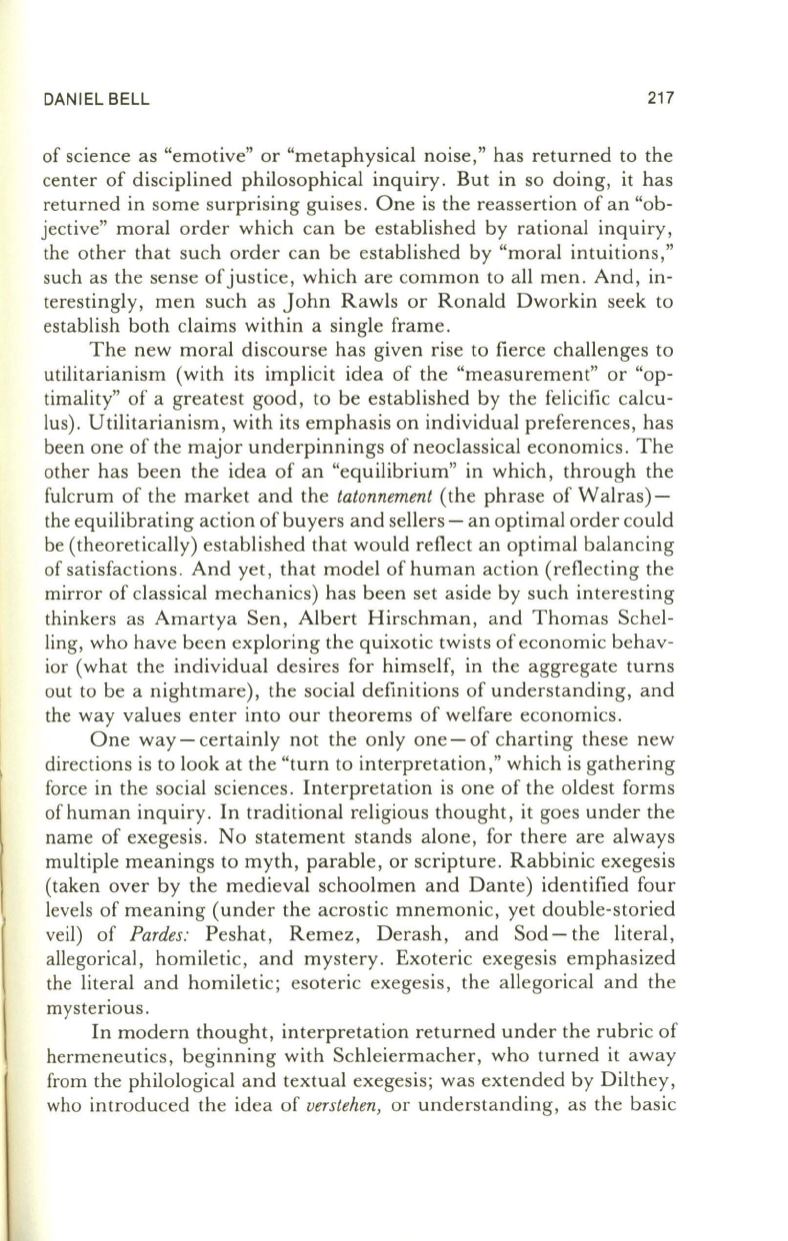
DANIEL BELL
217
of science as "emotive" or "metaphysical noise," has returned to the
center of disciplined philosophical inquiry. But in so doing, it has
returned in some surprising guises. One is the reassertion of an "ob–
jective" moral order which can be established by rational inquiry,
the other that such order can be established by "moral intuitions,"
such as the sense of justice, which are common to all men . And, in–
terestingly, men such as John Rawls or Ronald Dworkin seek to
establish both claims within a single frame.
The new moral discourse has given rise to fierce challenges to
utilitarianism (with its implicit idea of the "measurement" or "op–
timality" of a greatest good, to be established by the felicific calcu–
lus). Utilitarianism, with its emphasis on individual preferences, has
been one of the major underpinnings of neoclassical economics. The
other has been the idea of an "equilibrium" in which, through the
fulcrum of the market and the
tatonnement
(the phrase of Walras)–
the equilibrating action of buyers and sellers - an optimal order could
be (theoretically) established that would reflect an optimal balancing
of satisfactions. And yet, that model of human action (reflecting the
mirror of classical mechanics) has been set aside by such interesting
thinkers as Amartya Sen, Albert Hirschman, and Thomas Schel–
ling, who have been exploring the quixotic twists of economic behav–
ior (what the individual desires for himself, in the aggregate turns
out to be a nightmare), the social definitions of understanding, and
the way values enter into our theorems of welfare economics.
One way - certainly not the only one - of charting these new
directions is to look at the "turn to interpretation," which is gathering
force in the social sciences . Interpretation is one of the oldest forms
of human inquiry.
In
traditional religious thought, it goes under the
name of exegesis. No statement stands alone, for there are always
multiple meanings to myth, parable, or scripture . Rabbinic exegesis
(taken over by the medieval schoolmen and Dante) identified four
levels of meaning (under the acrostic mnemonic, yet double-storied
veil) of
Pardes:
Peshat, Remez, Derash, and Sod - the literal,
allegorical, homiletic, and mystery. Exoteric exegesis emphasized
the literal and homiletic; esoteric exegesis, the allegorical and the
mysterious .
In
modern thought, interpretation returned under the rubric of
hermeneutics, beginning with Schleiermacher, who turned it away
from the philological and textual exegesis; was extended by Dilthey,
who introduced the idea of
verstehen,
or understanding, as the basic


